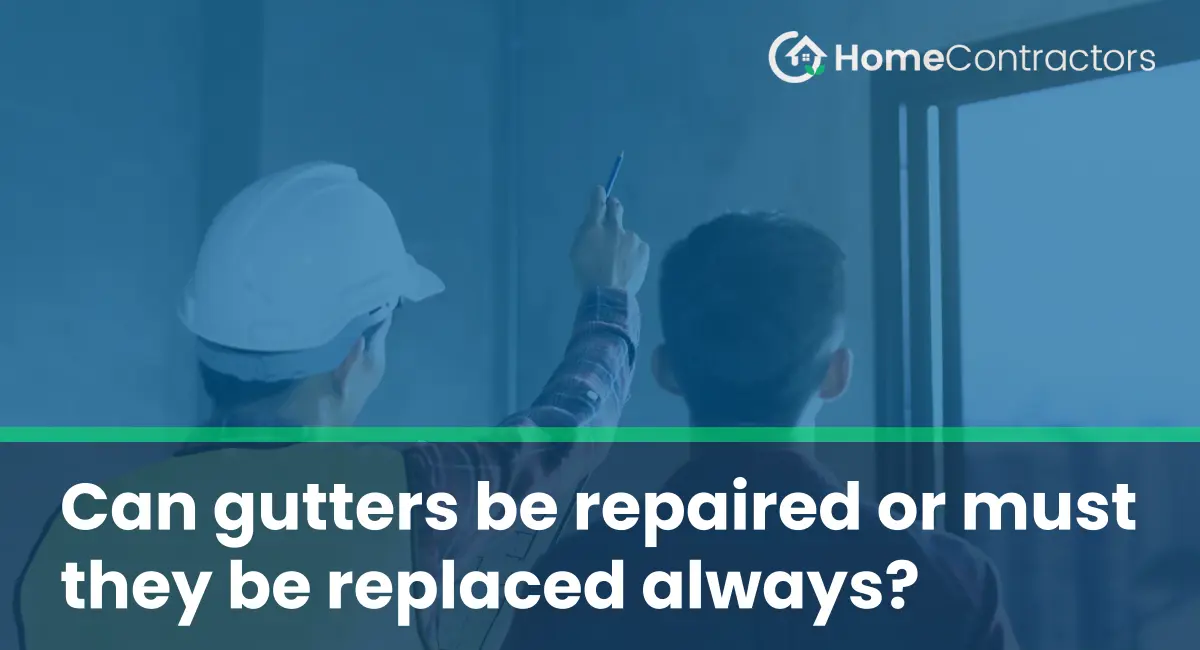Gutters play a vital role in protecting our homes from water damage. They collect rainwater and direct it away from the foundation, preventing erosion, basement flooding, and structural issues. However, gutters can become damaged over time due to various factors, such as heavy rainfall, clogs, or age. When faced with a damaged gutter, homeowners often wonder if it can be repaired or if a replacement is necessary. In this article, we will explore the options available and discuss when to repair or replace gutters.
1. The importance of gutters
Before diving into the repair versus replacement debate, it is crucial to highlight the significance of gutters. Gutters are responsible for diverting rainwater, preventing it from pooling on the roof or seeping into the home’s foundation. This redirection safeguards against a wide range of potential issues, including water damage, mold growth, basement flooding, and costly repairs.
2. Signs of gutter damage
Recognizing the signs of gutter damage is essential in determining whether repair or replacement is required. Some common indications of gutter problems include:
a) Leaks: Water dripping or overflowing from the gutter system indicates cracks or holes that need attention.
b) Sagging gutters: A gutter system that is not correctly pitched or secured may sag, leading to inadequate drainage and potential damage.
c) Rust: If your gutters are made of metal, rust can develop over time, weakening the structure.
d) Peeling paint or stains: When gutters fail to direct rainfall properly, water can overflow and cause paint to peel or leave unsightly stains on the exterior of your home.
e) Large debris or plants growing inside gutters: Clogs can prevent water from flowing freely, leading to damage caused by standing water or excess weight.
3. Gutter repair options
In many cases, gutter damage can be repaired, saving homeowners the expense of a full replacement. Some common repair options include:
a) Patching leaks: Small holes or cracks can often be sealed with a special gutter sealant or adhesive, effectively preventing leaks.
b) Realigning or reinforcing gutters: If sagging or loose gutters are the issue, they can often be realigned, reaffixed, or reinforced with additional hangers or brackets.
c) Clearing clogged gutters: Regular maintenance, such as removing debris, leaves, or plants, can restore proper functioning to clogged gutters, preventing further damage.
4. When to replace gutters
While repairs may be an adequate solution for minor issues, there are situations where gutter replacement is necessary. Consider replacing your gutters if:
a) The damage is severe: Extensive damage, such as large holes, multiple leaks, or significant corrosion, may warrant a complete replacement.
b) Age and deterioration: Gutters have a lifespan, and if they are reaching the end of their expected longevity, it may be more cost-effective to replace them rather than repeatedly repairing them.
c) Inadequate size or design: If your gutters are too small, improperly pitched, or inadequate for your home’s needs, it may be necessary to invest in a new gutter system.
5. Professional assessment and decision-making
Determining whether to repair or replace your gutters can be challenging. It is always advisable to consult with a professional gutter contractor to assess the extent of the damage and recommend the best course of action. They will have the expertise to accurately evaluate the situation and provide expert advice on the most cost-effective solution.
Gutters are critical to safeguarding our homes from water damage, and maintaining their functionality is essential. While repairs can be a suitable solution for minor damage, there are situations where gutter replacement is the best course of action. Consulting with a professional is invaluable in making an informed decision and ensuring the long-term protection of your home.
